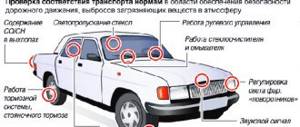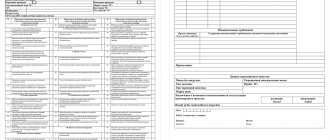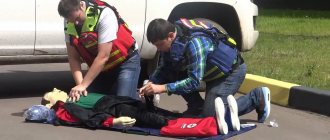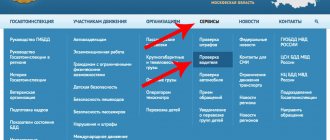Which car drivers are required to have a first aid kit?
The traffic regulations in force in Russia contain an appendix listing the conditions under which it is prohibited to operate vehicles in the country. One of them is the lack of a first aid kit on most types of transport.
In accordance with this application, the first aid kit must be in:
- buses,
- passenger cars,
- trucks,
- wheeled tractors,
- side-trailer motorcycles.
Therefore, for example, a first aid kit is not required for motorcycles that do not have a sidecar (“sidecar”).
The prohibition on operating the above-mentioned vehicles without a first aid kit does not imply a ban on movement. Naturally, if it happened that you were forced to use part of the contents of the first aid kit, you are not obliged to look for where to buy a new car first aid kit or try to replenish it, and only then continue on your way. You have the right to continue driving, but at the first opportunity you must buy a new first aid kit or part of the missing contents.
Types of first aid kits
Depending on what vehicle the first aid kit is intended for and the number of passengers it can carry, first aid kits are divided into:
- AMA-1. Designed for passenger cars carrying no more than 9 people, including the driver and tractors.
- AMA-2. Used by minibuses and other vehicles that carry more than 9 passengers. The contents of the first aid kit differ only in the large number of each item.
- Euro standard. It is somewhat different in its composition; its presence will allow you to cross the border without hindrance (without claims).
When were the last changes made to the composition of the car first aid kit?
The composition of a car first aid kit, mandatory in 2021, was approved in 2009, and the changes came into force in 2010. Since then, nothing has changed, the composition of the first aid kit is still the same.
The changes made to the composition of the first aid kit in 2009 became quite serious. In a modern car first aid kit there are practically no medications, especially painkillers.
A modern first aid kit consists mostly of means for dressing wounds, as well as stopping bleeding, and for carrying out resuscitation actions that can be carried out by a non-specialist.
There are several reasons for excluding painkillers from the first aid kit. One of the main ones is the victim’s potential allergy, due to which painkillers may worsen his condition. Another reason is that it is not possible to create a number of specific conditions for storing such products in a car.
Power steering
16. The use of parts with traces of residual deformation, cracks and other defects in the steering mechanism and steering drive is not allowed
16. The use in the steering mechanism and steering drive of parts with traces of residual deformation, with cracks and other defects, inoperability or absence of a steering damper and power steering provided by the vehicle manufacturer in the operational documentation of the vehicle is not allowed. Leakage of working fluid in the power steering hydraulic system is not allowed
Starting February 22, 2021, the power steering and steering damper will be checked during the inspection. Please note that we are talking about amplifiers of all designs , i.e. hydraulic boosters, electric boosters and others. If the car was originally equipped with such an amplifier, then it should work.
As for the hydraulic booster, there is an additional requirement for it. There should be no leakage of working fluid.
Note. Previously, the requirements of this paragraph did not apply to vehicles of category L (motorcycles, quadricycles, etc.). However, from February 22, steering will be checked on all vehicles except trailers.
Composition of a car first aid kit in 2021
The composition of a car first aid kit is regulated by the Order of the Ministry of Health in its current version.
In total, a first aid kit for a car should contain 17 items (including the case and instructions):
- Hemostatic tourniquet: 1 pc.
- Non-sterile bandages 5 m x 5 cm: 2 pcs.
- Non-sterile bandages 5 m x 10 cm: 2 pcs.
- Non-sterile bandages 7 m x 14 cm: 1 pc.
- Sterile bandages 5 m x 7 cm: 2 pcs.
- Sterile bandages 5 m x 10 cm: 2 pcs.
- Sterile bandages 7 m x 14 cm: 1 pc.
- Sterile dressing bag: 1 pc.
- Sterile medical gauze wipes (at least 16x14 cm): 1 package.
- Bactericidal adhesive plasters (at least 4x10 cm): 2 pcs.
- Bactericidal adhesive plasters (at least 1.9x7.2 cm): 10 pcs.
- Rolled adhesive plaster (at least 1 cm x 2.5 m): 1 pc.
- Device for resuscitation "mouth-device-mouth": 1 pc.
- Scissors: 1 pair.
- Medical gloves (at least size M): 1 pair.
- Recommendations for using the first aid kit: 1 copy.
- Case for first aid kit: 1 pc.
In theory, you are not required to purchase a ready-made car first aid kit. You can assemble it yourself.
Naturally, it is easier to purchase a ready-made set, but you can complete it yourself. The main thing is not to forget to find and print (or make a photocopy) recommendations for using a first aid kit and put all the necessary first aid supplies in the case. Both of these items must be included in a first aid kit for a car.
How much does a first aid kit for a car cost and where can I buy it?
You can assemble a car first aid kit in 2021 - 2021 yourself, knowing the requirements for the list of necessary items, or you can purchase it ready-made. In the first case, the cost of a first aid kit will depend directly on your preferences: on what kind of case you buy, what quality of medical consumables, what medications you add at your discretion. The main thing is not to forget that everything must comply with GOST.
If you want to purchase a ready-made first aid kit, then everything is simpler. Its cost varies from 200 rubles and above, the most expensive copies will cost you 600-800 rubles. The price of the set depends on the quality of the case (textile, plastic, lock in the form of a button or zipper) and the contents itself. The higher the price, the higher the quality, completeness and compliance with sanitary standards. Therefore, you should not chase low prices. Car first aid kits are not a scarce commodity in 2021, so purchasing them will not be difficult. This can be done in several ways:
- Buy from an auto store . Almost every salon and store specializing in the sale of car accessories has a first aid kit. It is better to choose a reliable and well-known place where there will clearly be no complaints about quality.
- Buy at a pharmacy . The most popular way. Pharmacies are trusted because their activities are aimed at selling certified, proven medicines and medical consumables, which means that the contents of the first aid kit will definitely satisfy all requirements and standards.
- Buy online . For many, it is an extremely convenient option, which should not be written off either. Many organizations offer the sale of car first aid kits in a wide range of price ranges directly to your home.
Expiration date for medical first aid kit 2021
Looking at the composition of the first aid kit, it is clear that it has a long shelf life. Since there are no medications in a modern first aid kit, its shelf life is limited only by the shelf life of adhesive plasters, which lose their beneficial qualities over time.
One way or another, the general shelf life of the first aid kit is 4.5 years.
For another 6 months you have the right to use the first aid kit, but during this time you must exchange it for a new one.
FAQ: Frequently asked questions about first aid kits
What is a first aid kit?
This is a small plastic suitcase with internal compartments.
Can they give a fine for not having a first aid kit immediately, not limited to a warning?
Yes they can. But for the first time, the inspector will issue a warning. If the traffic police officer insists on a fine due to a lack of medicine, you can always refer to helping another driver a couple of kilometers ago.
How to use a first aid kit during an accident? First aid is simple actions that can save the lives of victims. Many people get lost in a stressful situation, but remember: any delay is fraught with death.
The basic rule of first aid: do not change the position of the victim’s body; any movement in a critical situation can lead to death. Remember what you were taught in driving school.
How to provide first aid for the most common injuries in a road accident?
Venous bleeding:
- Wear disposable gloves;
- Apply pressure just below the wound;
- Apply a sterile pressure bandage, mark the time, this will be useful to doctors;
The wounded man is not breathing:
- Remove/loose clothing from the victim's body;
- Clean your mouth;
- Apply a mask and perform artificial respiration.
Bleeding from an artery:
- Take out disposable gloves and put them on;
- Apply pressure with your fingers and bandage the wound with a tourniquet. Remember the time when the bandage was applied;
- Apply a tight bandage made from napkins and bandages on top;
- Inform emergency personnel about the time to apply the tourniquet.
Weak, capillary bleeding:
- If disinfectants are present, treat wounds;
- Apply a tight bandage.
- Cover with a bactericidal plaster or disinfect and apply a regular one.
- Call an ambulance: the absence of visible damage does not guarantee that the internal organs are in order.
Why are gloves included in the list?
To eliminate the risk of infection. Road accidents occur in road conditions, dust and dirt. Those who come to the aid of the victim do not have the opportunity to wash and disinfect their hands. Gloves help reduce the risk of infection when providing first aid.
Why were so many drugs eliminated after 2010?
It was inconvenient to keep track of all the components: the expiration dates of the medications were different, and medications had to be changed frequently. Certain medications, such as painkillers, interfered with the correct emergency diagnosis.
Are there separate fines for a first aid kit, a fire extinguisher and an emergency sign?
No. Are you missing one item? Two, or maybe three at once? Regardless of whether you lack all the items or just one, the fine will remain the same - 500 rubles.
Can traffic police officers inquire about the availability of a first aid kit?
Yes, if you have failed the inspection. Please note that if the inspector declares that he does not see the first aid kit and fire extinguisher (they are not present in his field of vision), it is not necessary to show them. Indicating such a reason in the protocol is a violation of Article 19.1 of the Code of Administrative Offences. Remember: the first aid kit is not needed by the traffic police, but primarily by you and your passengers. Make sure that in an unforeseen situation none of you is left without help!
Punishment for not having a first aid kit in 2021
In accordance with Article 12.5 of the Code of Administrative Offenses of Russia, there are the following potential types of sanctions for the lack of a first aid kit: a warning or a fine of 500 rubles.
Considering that a new first aid kit in stores will cost you about 300-500 rubles, there is definitely no point in risking a fine and giving up the first aid kit. Moreover, it may happen that you risk not only a fine, but also someone’s life, including your own.
It is also necessary to take this circumstance into account. In the Russian Criminal Code there are articles 124 and 125, which provide penalties for failure to provide assistance to a patient and leaving a person in danger. If it happens that you were supposed to help someone and failed due to the lack of a first aid kit in the car, you may also be subject to criminal liability. This means fines of tens of thousands of rubles, forced labor or possible imprisonment for up to 1 year.
Where and how best to store?
Some motorists carelessly believe that a car first aid kit is of no use and can be thrown into the trunk to gather dust. This is a fundamentally wrong approach. Suppose a car gets into an accident, and its trunk, which contains the treasured first aid kit, is blocked by another car. And at the same time, the person is bleeding, and there is no way to get to the tourniquet and bandages. A terrible scenario, isn't it?
To prevent such situations, it is most convenient to keep a first aid kit in the car, within maximum reach. Some drivers prefer to put it under their seat, for some it is more convenient to store the first aid kit in a pocket on the back of the seat, for others they carry it in the back seat of the car. It’s more convenient for everyone, but the most important aspect has been observed - if something happens, reaching it will not be so problematic.
Leakage of oils and working fluids
65. Dropping, repeated at intervals of more than 20 drops per minute, of oils and working fluids from the engine, gearbox, final drives, rear axle, clutch, battery, cooling and air conditioning systems and additional hydraulic devices installed on vehicles is not allowed
65. Dripping of oils and working fluids from the engine, gearbox, final drives, rear axle, clutch, battery, cooling and air conditioning systems and hydraulic devices additionally installed on vehicles is not allowed.
Please note that the phrase “more than 20 drops per minute” is excluded from this paragraph. That is, if there is any leak in one of the car’s systems, it will not be possible to pass the inspection.
Change in vehicle design
68. Changes in the design of the vehicle made in violation of the requirements established by Section 4 of Chapter V of TR CU 018/2011 are not allowed
Changing the design of the vehicle is discussed in detail in this article. In this case, all that remains to be noted is that if some non-standard components are installed on the car and information about them is not included in the registration certificate, then it will not be possible to pass the technical inspection.










